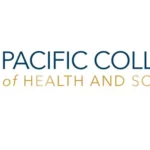Chicago and San Diego Campuses of Pacific College of Health and Science (PCHS) to join Southern California University of Health Sciences (SCU)

Agreement Strengthens the Leadership Positions of Both SCU and PCHS in Integrative, Whole Health Education Whittier, CA, Chicago, IL, San Diego, CA, and New York, NY – Southern California University of Health Sciences (SCU) and Pacific College of Health and Science (PCHS) today jointly announced that they have signed a definitive agreement through which SCU …








